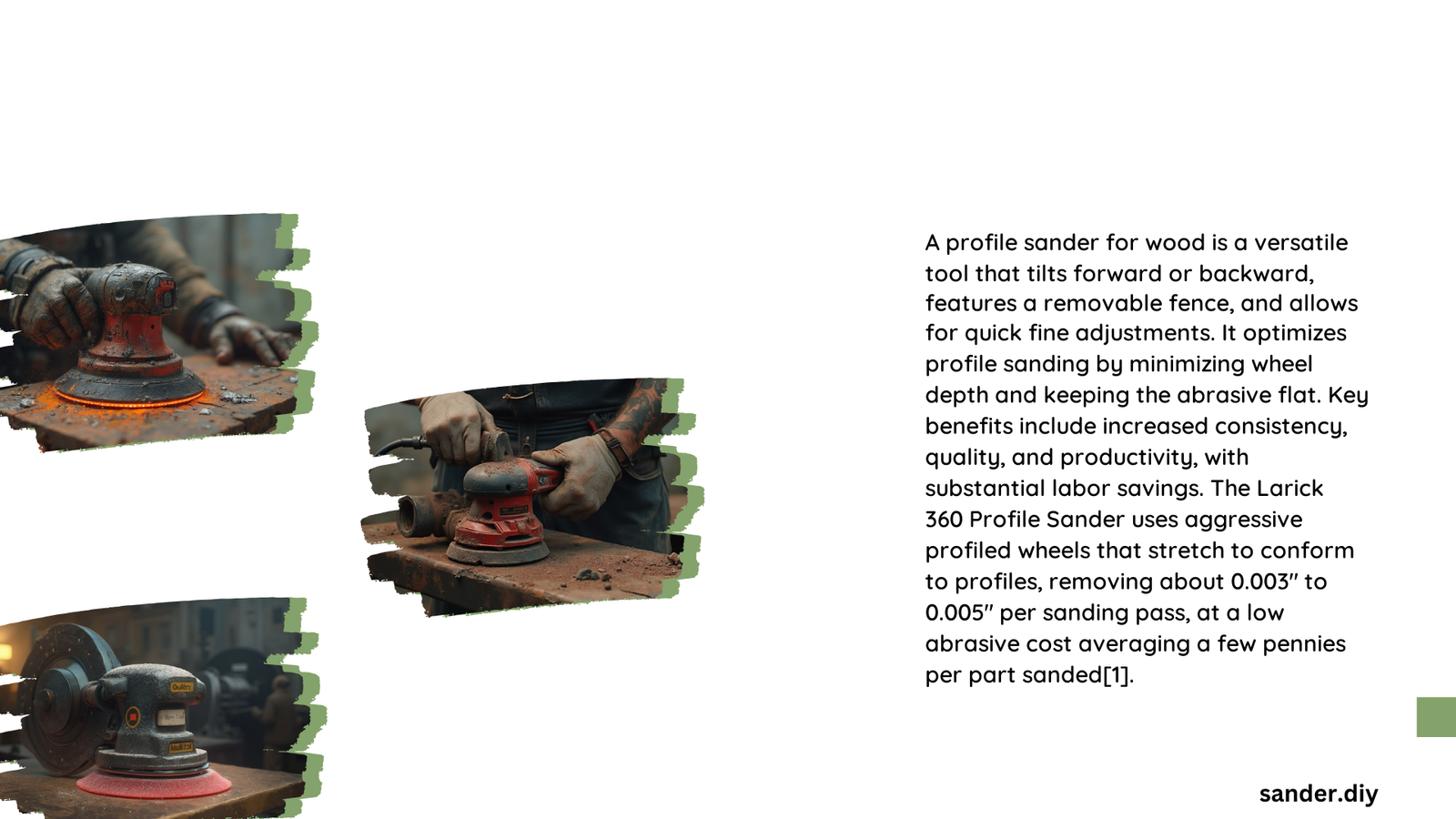A profile sander for wood is a specialized tool designed to sand intricate shapes, curves, and profiles in woodworking projects. These sanders are essential for achieving smooth finishes on moldings, trim work, and custom wood pieces. With their ability to conform to various contours, profile sanders offer precision and efficiency that surpass traditional hand sanding methods. This comprehensive guide explores the features, techniques, and best practices for using profile sanders in woodworking.
What Are the Key Features of a Profile Sander for Wood?
Profile sanders for wood come with several important features that enhance their performance and versatility:
- Interchangeable Pads: Many profile sanders offer a range of pad shapes to match different wood profiles.
- Variable Speed Control: Adjustable speed settings allow for better control over the sanding process.
- Dust Collection System: Integrated dust extraction helps maintain a clean work environment.
- Ergonomic Design: Comfortable grip and balanced weight distribution reduce user fatigue.
- Tool-free Pad Changes: Quick and easy pad swapping for different profiles.
How Do Profile Sanders Differ from Other Wood Sanders?

Profile sanders are uniquely designed to handle curved and shaped surfaces:
- Specialized Shape: Unlike flat orbital sanders, profile sanders have contoured pads that fit into grooves and curves.
- Precision: They offer more control for detailed work compared to belt or drum sanders.
- Versatility: Profile sanders can adapt to various wood shapes that other sanders can’t effectively reach.
- Reduced Hand Fatigue: They minimize the need for manual sanding in hard-to-reach areas.
What Are the Best Profile Sanders for Wood on the Market?
Two highly regarded profile sanders for wood are:
- Festool Duplex LS 130 EQ
- Dimensions: 3″ x 5″
- Features: Dust extraction system, FastFix tool-free pad change
- Grit Range: P40 to P280
-
Performance: 3x faster than hand sanding
-
Larick 360 Profile Sander
- Wheel Sizes: Various, with bore sizes of 3/4″, 1″, 11/4″, and 40mm
- Features: Tiltable wheel, variable speed control
- Adjustability: Horizontal and vertical spindle adjustments
- Versatility: Can use one or two strips of abrasive for complex profiles
How to Choose the Right Sandpaper for a Profile Sander?
Selecting the appropriate sandpaper is crucial for effective profile sanding:
- Grit Selection:
- Coarse (40-60 grit): For initial shaping and removing material
- Medium (80-120 grit): For smoothing and preparing for finish
- Fine (150-220 grit): For final smoothing before finishing
-
Extra Fine (240+ grit): For ultra-smooth finishes or between coats of finish
-
Material Compatibility:
- Aluminum Oxide: Versatile and suitable for most wood types
- Silicon Carbide: Ideal for hardwoods and finishes
-
Garnet: Natural abrasive good for hand sanding and light machine use
-
Profile Matching:
- Ensure the sandpaper conforms to the profile shape
- Consider pre-shaped sanding pads for common profiles
What Are Advanced Techniques for Using a Profile Sander on Wood?
To maximize the effectiveness of your profile sander:
- Angle Adjustments:
- Tilt the sanding wheel to minimize profile depth
-
Use the angle adjustment to keep the abrasive as flat as possible against the wood surface
-
Pressure Control:
- Apply consistent, light pressure to avoid gouging
-
Adjust pressure based on wood hardness and desired finish
-
Speed Settings:
- Use lower speeds for delicate profiles or softer woods
-
Increase speed for faster material removal on hardwoods
-
Multiple Passes:
- Start with coarser grits and progressively move to finer grits
- Make several passes at each grit level for the best results
How to Maintain a Profile Sander for Optimal Performance?
Proper maintenance ensures longevity and consistent performance:
- Regular Cleaning:
- Remove dust and debris after each use
-
Clean or replace dust collection filters regularly
-
Pad Inspection:
- Check pads for wear and tear
-
Replace pads when they show signs of degradation
-
Lubrication:
- Follow manufacturer guidelines for lubricating moving parts
-
Keep adjustment mechanisms clean and lubricated
-
Storage:
- Store in a dry, dust-free environment
- Use a case or cover to protect the tool when not in use
What Safety Precautions Should Be Taken When Using a Profile Sander?
Safety is paramount when operating any power tool:
- Personal Protective Equipment (PPE):
- Wear safety glasses to protect eyes from dust and debris
- Use a dust mask to prevent inhalation of fine particles
-
Consider hearing protection for extended use
-
Workspace Setup:
- Ensure proper ventilation in the work area
-
Secure workpieces to prevent movement during sanding
-
Tool Handling:
- Keep both hands on the sander for better control
-
Avoid applying excessive pressure to prevent overheating
-
Electrical Safety:
- Inspect cords regularly for damage
- Use GFCI-protected outlets when working in damp environments
By following these guidelines and techniques, woodworkers can effectively utilize profile sanders to achieve professional-quality results on even the most intricate wood profiles. Whether you’re working on custom moldings, furniture details, or restoration projects, a profile sander is an invaluable tool for precision woodworking.
